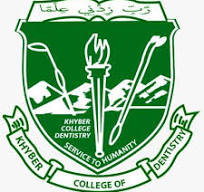PATTERN AND COMMON RISK FACTORS OF MAXILLOFACIAL FRACTURES IN ADULTS
DOI:
https://doi.org/10.33279/jkcd.v10i03.210Keywords:
Maxillofacial Injuries, Fracture Maxilla, Fracture Mandible, Road Traffic Accidents, Assault.Abstract
Objective:
To dertemine the pattern and leading factors of maxillofacial trauma in adults.
Materials and Methods:
This was descriptive crossectional study which was carried out at the Department of Oral & Maxillofacial Surgery, Khyber College of Dentistry Peshawar from 02 March, 2018 to 02 November, 2018. A total of 189 patients were selected. The age range was 17-60 years. Fire arm injured patients and those presenting after 24 hours of injury were excluded from this study. The data were analyzed using SPSS 22.0 version. Pvalue ≤ 0.05 was taken as significance.
Results:
Amongst 189 patients, 156 (74.64%) were male and 47 (25.53%) were female. RTA was the leading factor with 108 (54.41%) followed by assaults 45 (23.80%) and falls 36 (19.04%).36 (19.04%) patients have pan facial fractures and 32 (16.93%) patients had zygomatic complex fractures while 26 (13.75%) patients had fracture maxilla, 11 (5.82%) patients had fracture mandible, 36 (19.04%) patients had frontal bone fractures. Mandibular Dentoalveolar Fractures were 16 (8.46%) while Maxillary Dentoalveolar Fracture 10 (5.29%), orbito Nasoethmoide Fracture was found to be 22 (11.64%).
Conclusion:
This study concluded that road traffic accidents were the leading factor which results in maxillofacial trauma.
Downloads
Published
How to Cite
Issue
Section
License
Copyright (c) 2020 Muhammad Irfan Khan, Riaz Khan, Muhammad Ilyas

This work is licensed under a Creative Commons Attribution-NonCommercial-NoDerivatives 4.0 International License.
You are free to:
- Share — copy and redistribute the material in any medium or format
- Adapt — remix, transform, and build upon the material
- The licensor cannot revoke these freedoms as long as you follow the license terms.
Under the following terms:
- Attribution — You must give appropriate credit , provide a link to the license, and indicate if changes were made . You may do so in any reasonable manner, but not in any way that suggests the licensor endorses you or your use.
- NonCommercial — You may not use the material for commercial purposes .
- No additional restrictions — You may not apply legal terms or technological measures that legally restrict others from doing anything the license permits.









